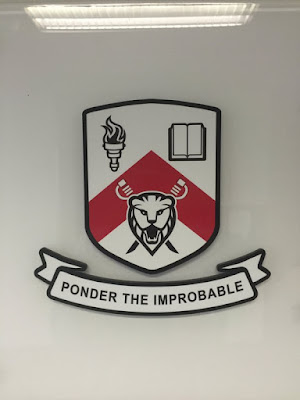At the sunken lane. The Confederates used this as a ready-made trench, but as I've explained before it is actually a terrible place to defend, and it ended up becoming a trap for hundreds of the men who defended it.
Ben is ready to repel attackers, and Clara is already dead.
They practice contemplative poses.
Up in the observation tower. The views weren't great, because it was a gray, gray day, but it was still fun.
Notice this pigeon happily nesting in among the anti-pigeon spikes.
Confederate's-eye view of Burnside Bridge; an old photo because today it was covered with scaffolding. I explained to Ben that it was defended by Georgians and attacked by New Yorkers. He said,
So it was like, Georgians: "Y'all goan die." New Yorkers: "Fuggetaboutit."Ice cream at Nutter's in Sharpsburg, an essential part of any trip to Antietam.
Clowning in the National Cemetery. They had a copy of the Gettysburg Address posted on a wall, and we read it aloud together, taking turns. As we walked away Ben said, "It was cool that we did that."





































